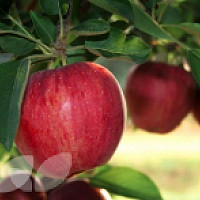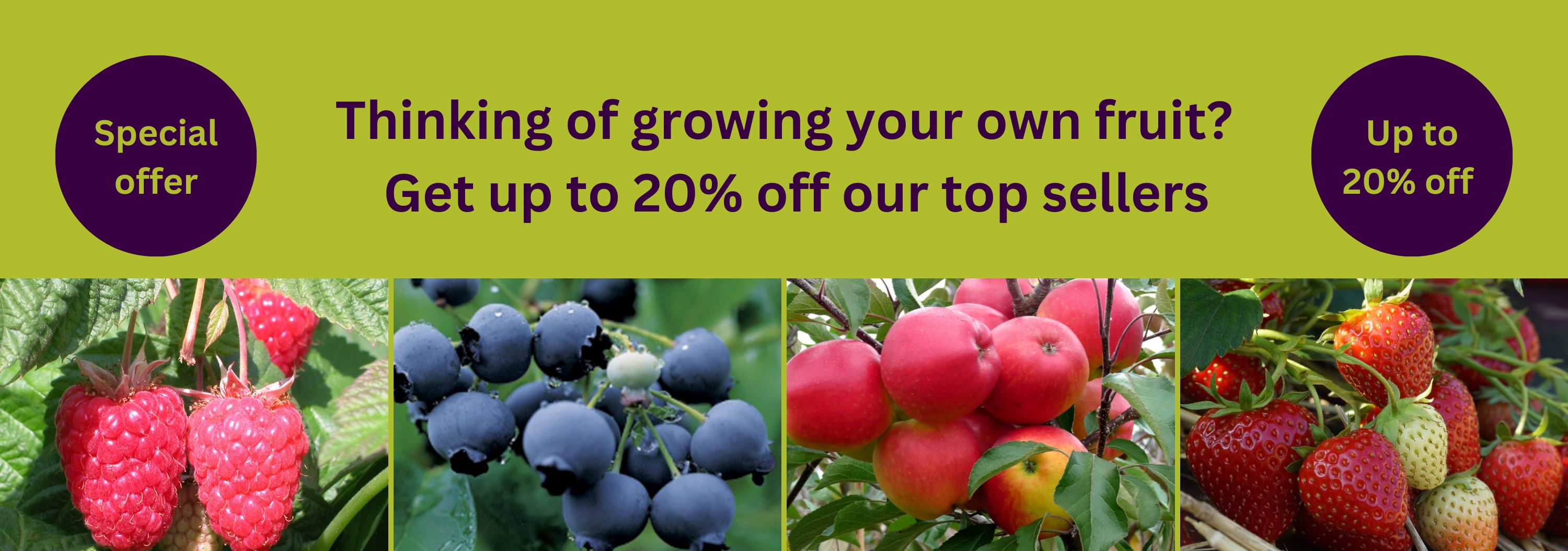Choosing a Fruit Tree for Your Garden

Choosing a Fruit Tree for Your Garden
Fruit trees are a wonderful addition to any garden, providing beauty, fresh produce, and the satisfaction of growing your own food. Whether you have a sprawling yard or a small patio, there’s a fruit tree to suit your space. Here’s how to make the right choice.
1. Pick a Fruit You Love
Choose a fruit you enjoy eating—apples, pears, cherries, or plums. Check that your garden’s conditions, such as sunlight, soil type, and available space, align with the tree’s requirements. Most fruit trees need at least six hours of sunlight daily and well-draining soil.
2. Fruit Trees for Small Gardens
Even if you have limited space, you can still enjoy growing fruit trees. Look for compact varieties or trees grown on dwarfing rootstocks, which keep them small and manageable. Ideal options for small gardens include:
· Dwarf Apple Trees: Grown on rootstocks like M27 or M9, these trees stay compact and can even thrive in containers.
· Espaliers or Fans: These trees are trained to grow flat against walls or fences, saving space while producing fruit.
· Cordons: Slim, upright trees that require minimal space but deliver high yields.
· Container-grown trees are perfect for patios or balconies and can be moved to follow the sun.
3. Understand Apple Rootstocks and Tree Sizes
Apple Trees
Apple trees grow to a range of sizes, so be sure to choose one to suit your space. Like many fruit trees, apples are grafted onto a rootstock, which controls the vigour and size of the tree. Rootstocks control the size, growth, and suitability of fruit trees for different gardens. There are various options to choose from – dwarfing rootstocks (such as M9 or M26) are best for small gardens, pots and trained forms like cordons and small espaliers, while semi-dwarfing rootstocks (such as MM106) produce larger trees, up to 4m (13ft) tall.
Here’s an overview of common apple rootstocks, which work similarly for other fruits:

Raspberry Canes
Raspberry canes typically grow to around 1.8m (6ft) tall and form bushy plants that need ample space. However, they can also thrive in containers at least 60cm (24in) in diameter.
Blueberry Bushes
Blueberry bushes vary in size, depending on the variety. Some remain compact at around 50cm (20in), while others can grow up to 2m (6½ft) tall. For containers, use a pot at least 30cm (12in) in diameter for young plants, and 45–50cm (18–20in) for larger ones. Blueberries are best grown in containers using an ericaceous compost.
Strawberry Plants
Strawberry plants are compact, typically reaching 20–30cm (8–12in) in height. They’re incredibly versatile and grow well in pots, grow bags, hanging baskets, troughs, and tubs.
4. Choose the Right Tree Shape
Pick a tree shape to suit your garden and space:
· Bush Trees: Compact and easy to manage, perfect for most gardens.
· Espaliers/Fans: Grown flat against walls or fences, great for small gardens.
· Cordons: Slim and upright, ideal for narrow spaces or growing multiple varieties.
5. Think about Pollination
Pollination is essential for fruit production, and not all trees can self-pollinate:
· Self-fertile varieties (e.g., ‘Stella’ cherries, ‘Conference’ pears ‘Red Falstaff’ apples, ‘Victoria’ plums) produce fruit on their own.
· Pollination-dependent varieties (e.g., many apples and pears) need a compatible tree of the same type that blooms at the same time.
If space is tight, consider planting self-fertile trees or growing two compatible varieties in close proximity.
6. Match the Tree to Your Garden Conditions
To ensure your tree thrives, check these basic requirements:
· Sunlight: Most trees need at least six hours of direct sunlight per day.
· Soil: Fruit trees prefer well-draining soil. Improve poor soil with compost or organic matter.
· Watering: Young trees need regular watering, especially during dry spells.
7. Plan for Harvest Time and Use
Different fruit varieties ripen at different times. Choose based on when you’d like to harvest:
· Early (summer): ‘Discovery’ apples, ‘Sunburst’ cherries.
· Midseason (autumn): ‘Cox’s Orange Pippin’ apples, ‘Conference’ pears.
· Late (late autumn): ‘Braeburn’ apples, ‘Victoria’ plums.
Consider how you’ll use the fruit. Some varieties, like Bramley apples, store well, while others, such as plums, are best eaten fresh or used immediately for cooking or preserving.
Summary
With the right rootstock, shape, and variety, fruit trees can fit into any garden—even the smallest ones. Dwarf trees, espaliers, and cordons are excellent choices for compact spaces, while larger gardens can accommodate more vigorous rootstocks and traditional tree forms. By tailoring your selection to your garden’s conditions, you’ll enjoy a thriving fruit tree and the rewards of homegrown produce for years to come.
Click On The Image Below To View Our Offers.


